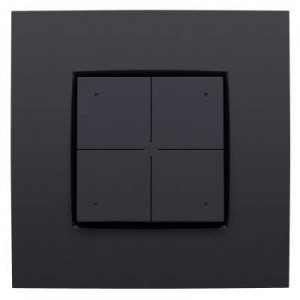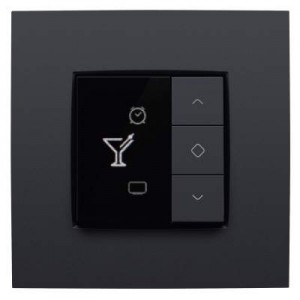Lighting Control
“There is one fundamental fact about lighting: Where there is no light, there is no beauty.”
So says Billy Baldwin the prominent interior decorator of Ruby Ross Wood in the 1920’s.
The same holds true almost a century later, but now the lighting control options in your home have increased greatly in quantity and quality. With the disappearance of the traditional incandescent lamps, the emergence of more eco-friendly light sources, like compact fluorescents and LEDs have flooded the market. This has opened up a whole range of possibilities in the field of mood, colour and accent lighting for the home.
Lighting combinations
The traditional centrally placed light pendant you might find in a living room is being more commonly superseded by energy efficient, LED lamps discretely recessed in the ceiling. To create different lighting moods there may be the addition of a standard lamp in the corner of the room and a couple of wall wash uplighters. Some, or all, of these light fittings can be controlled by a dimmer switch to change the lighting ambience further. The combination of which lights are switched on and each of their lighting brightness levels can create a different feel for different uses of the room.

Niko Home Control 4 way lighting control switch
This is where the lighting control in a smart home is well placed to enable the home owner to have full control over the lighting ambiance in each room at the touch of a button – or, even simpler, with a motion detector just walk into the room and the lights turn on! A smart home system such as Niko Home Control enables you to turn the lights on and off at the sleek stylish light switches. With a longer press of the button the lights are dimmed up or down to the required level. Or if you prefer they can be set to dim up or down automatically to a preset brightness level at one press of the button.
Mood lighting

Niko Home Control mood lighting control switch
Mood lighting can take lighting control a step further by use of the mood control light switch. Rather than switch on each individual light in the room to the correct lighting level, just select the appropriate preset lighting ‘mood’ eg. Party, Reading, Watching TV – each of these activities would require different levels of light from each light fitting. These controls can be coupled with other actions such as blinds automatically closing and the heating level being increased, should you want that.
If you don’t want to get out of your armchair, or you want to put the lights on before you enter the house, you can of course have the same level of lighting control from the your smartphone. You are also going to save energy costs by turning off lights in unoccupied rooms without having to run back upstairs to turn off your son’s bedroom light he’s left on!
Flexibility
Home automation not only offers convenience of use for lighting but also greater flexibility. Due to the wiring configuration of the Niko Home Control electrical installation, each light switch has a data cable installed back to the control module. Traditionally a light switch would be hard wired to a specific light fitting, in a smart home any light switch can be programmed to a operate any light or group of lights. Consequently a one gang light switch can, at a later date, be changed for a 2 or 4 gang light switch, to control as many lights, with only a few software tweaks and no changes to the wiring.
Other changes in functionality can be easily carried out for the user’s convenience. Here are a couple more examples:
- Program the switch by the front door to operate as an ‘all off’ light switch to ensure every light in the house is switched off from one button press. This will not only save you running upstairs to check the lights but also save you energy costs.
- Automatically switching specified lights on for predetermined time periods after dark when you are not at home. A great deterrent to any suspecting burglar. (The start and end times of the lighting periods can be randomised to avoid a set pattern being observed).
- Smart home control of your lighting will only increase convenience, flexibility, ease of control and reduce energy consumption and costs.





